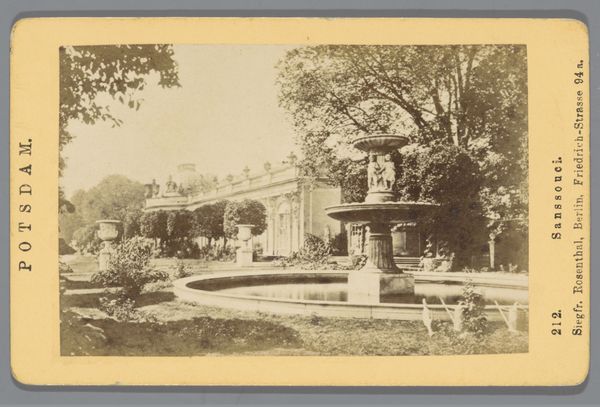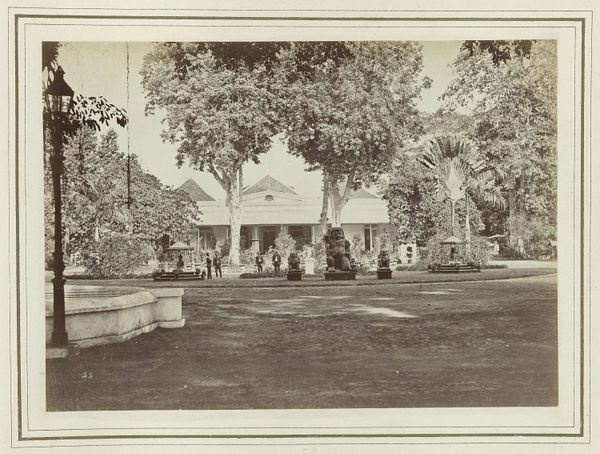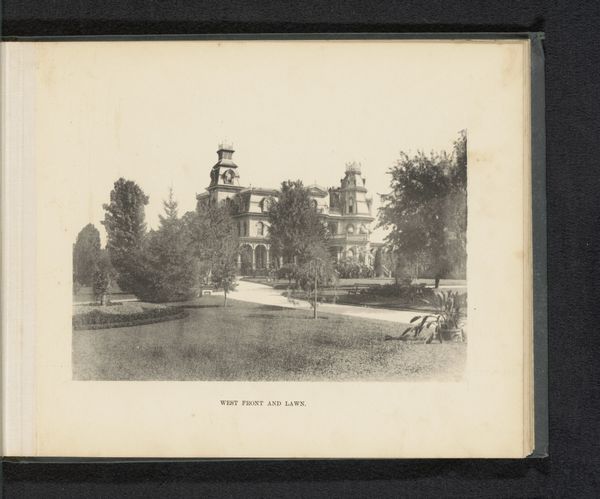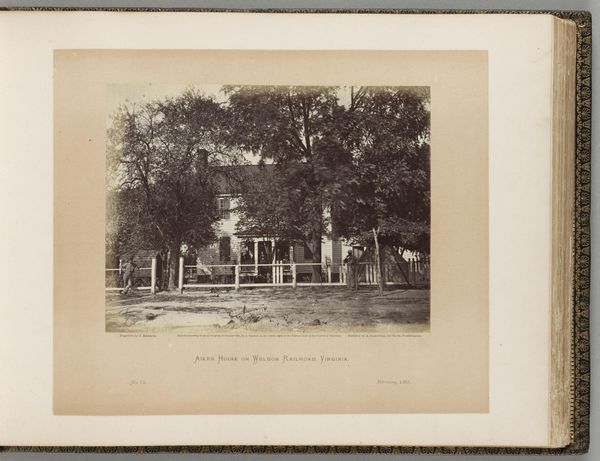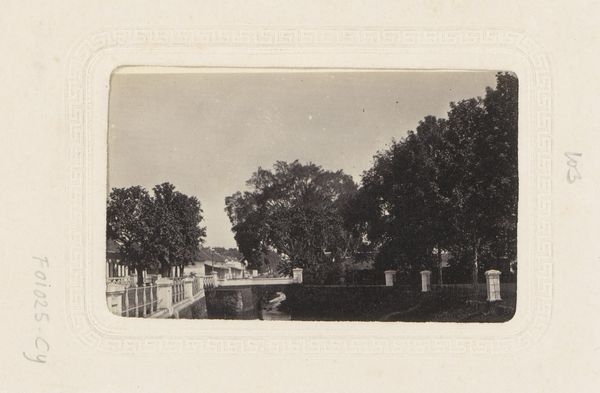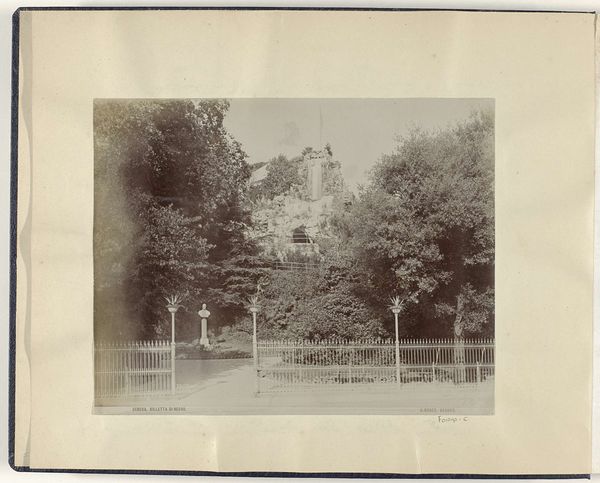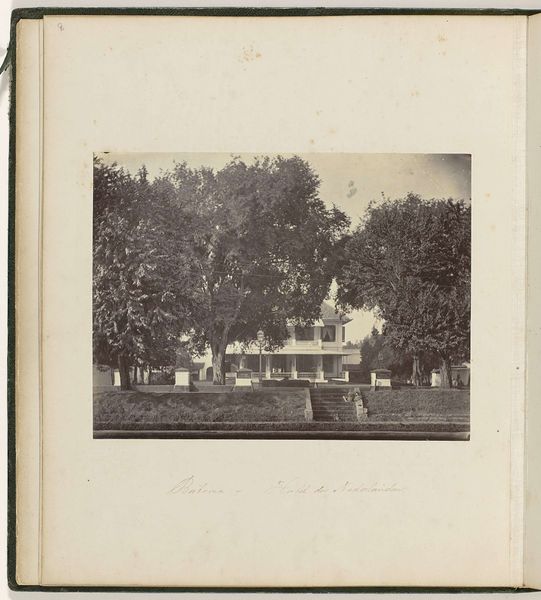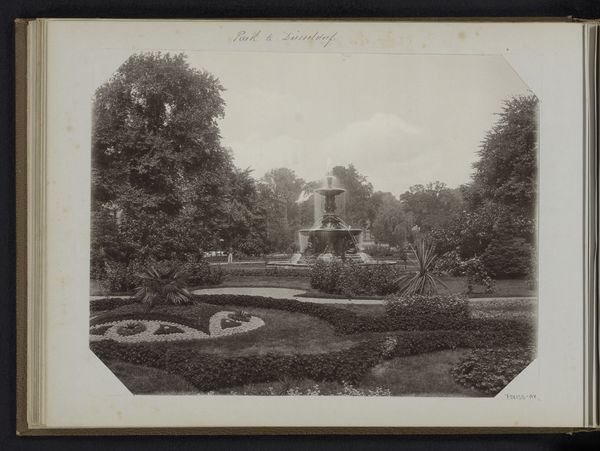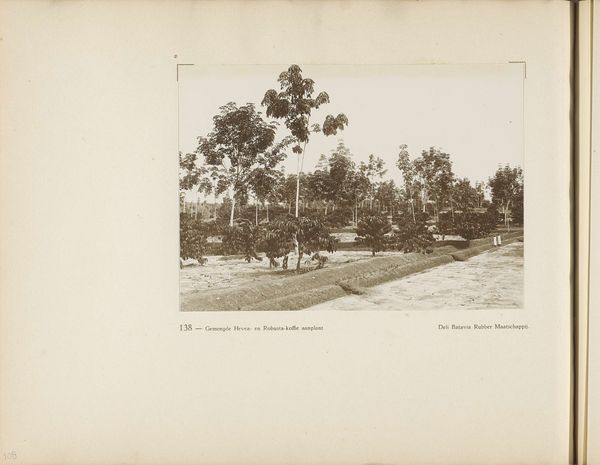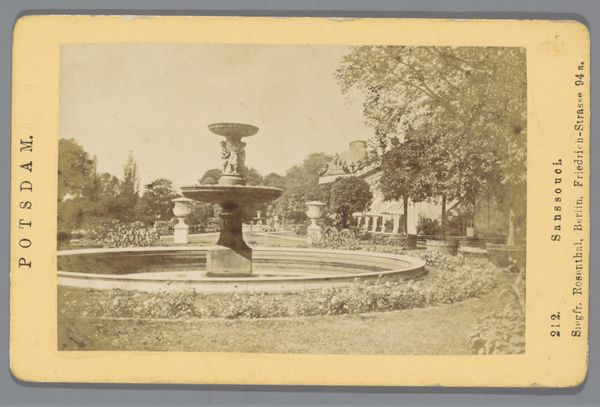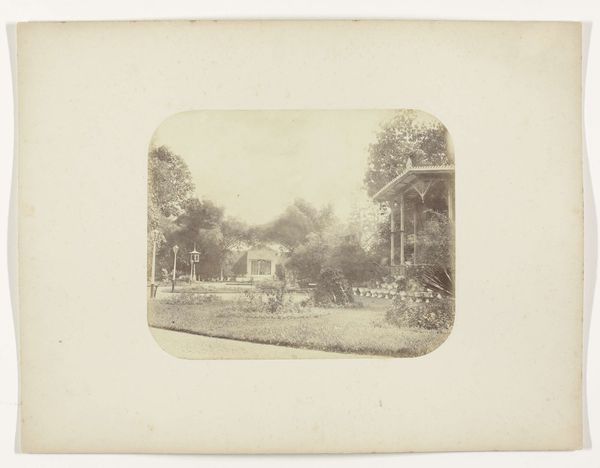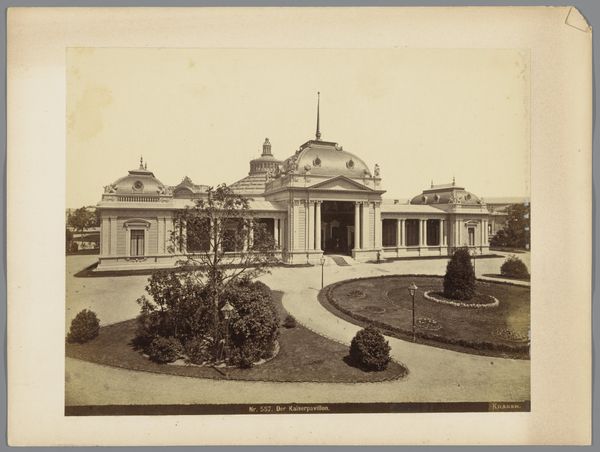
photography, albumen-print
#
pictorialism
#
landscape
#
photography
#
orientalism
#
park
#
genre-painting
#
watercolor
#
albumen-print
Dimensions: height 310 mm, width 385 mm
Copyright: Rijks Museum: Open Domain
Curator: What a beautifully composed image. This is "Gezicht op het park Villa Giulia te Palermo, Italië" by Giorgio Sommer, dating from between 1857 and 1914. It's an albumen print. Editor: It has a calm formality. The geometrical garden design with the building in the background and the neutral grey scale gives a sense of stillness. What more can you tell me about the context? Curator: Well, Palermo was a popular destination for wealthy Europeans in the 19th century, and Sommer catered to that market. His photographs, like this one, captured the picturesque landscapes and cultural sites that travelers sought to document their experiences. The albumen print process itself was a painstaking endeavor involving coating paper with egg whites to create a smooth surface for light-sensitive chemicals. Editor: And what do you make of the park? The way its carefully composed and maintained speaks volumes about leisure, labor and class. These parks required an army of gardeners. Sommer shows us this perfectly presented facade. I'm drawn to the act of photographing as a means of both preserving and, perhaps, constructing a specific version of reality. It highlights who has access to create, circulate, and consume these idyllic representations of travel. Curator: That’s a compelling reading. And think of the dissemination. The popularity of the albumen print made mass reproduction possible and photography democratized representation to some extent. It raises questions about authorship, too, when you consider the chemical processes involved and the technicians doing the developing. Editor: True, and I also consider who had access to those photographic materials and technical knowledge? Access to equipment, processing, the chemicals all are important and these considerations often point to existing class divides within 19th century society. But looking again at the park, the almost sterile aesthetic leaves me oddly unmoved. It feels more staged than inviting. Curator: It's interesting that you find it sterile. I'm captivated by its historical resonance, that sliver of preserved time in print. The meticulous craft evident in the albumen process, the artist's selection, they all combine to tell a multi-layered story. Editor: Perhaps in the end it’s about how we encounter the artwork, each viewing reveals our distinct investment, our values towards its artifice and making. Curator: I would agree!
Comments
No comments
Be the first to comment and join the conversation on the ultimate creative platform.
